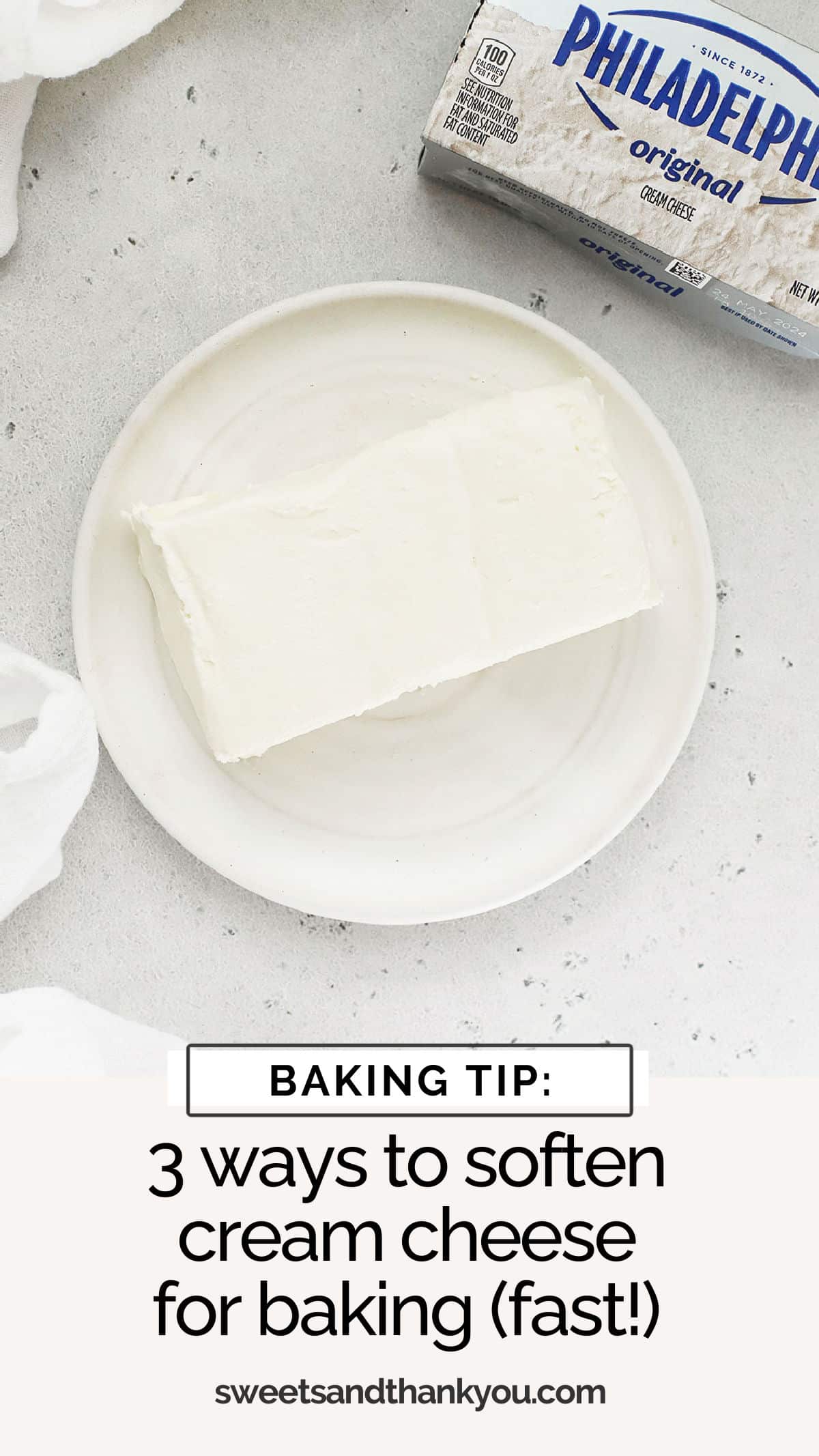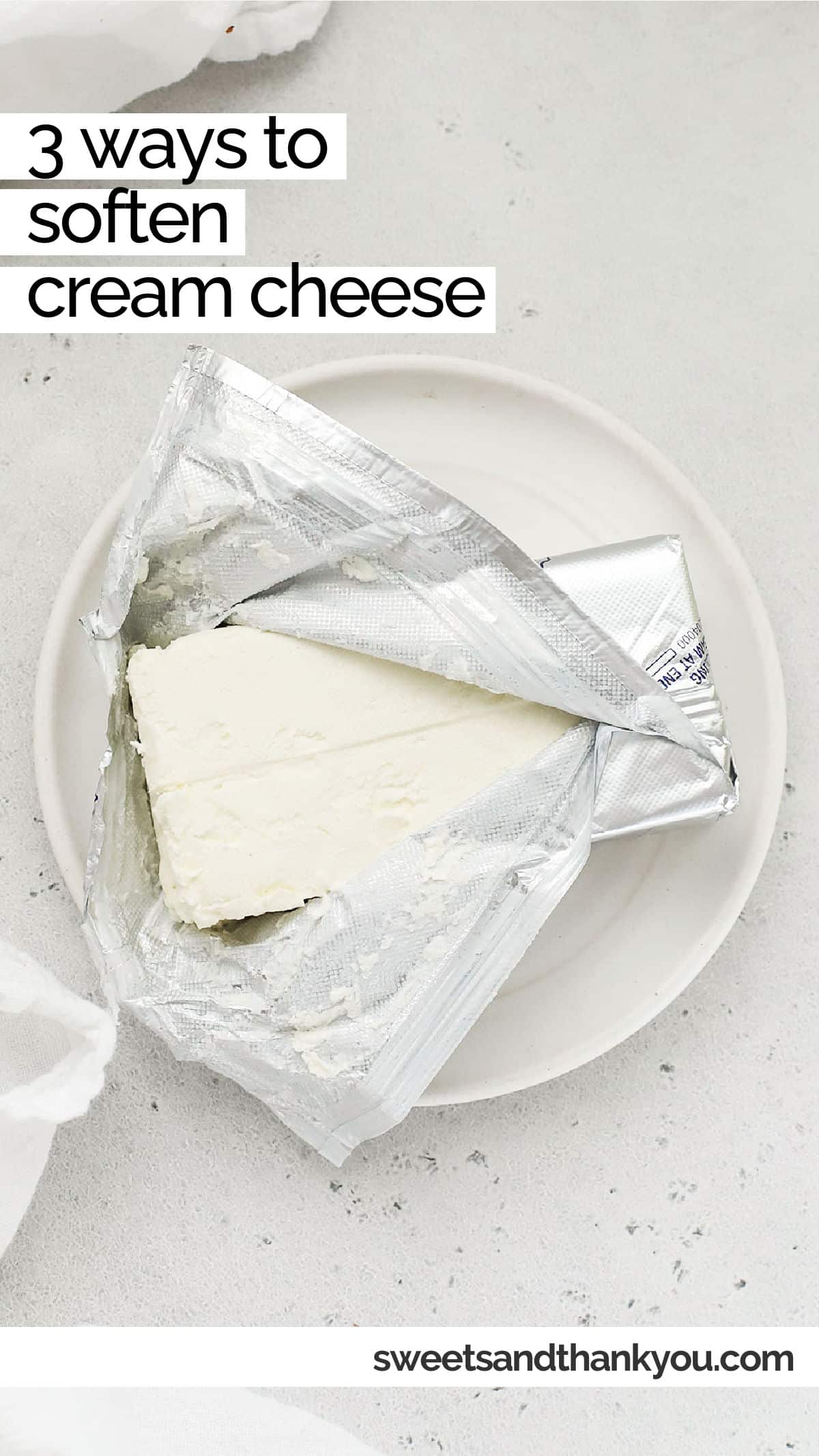How To Soften Cream Cheese Quickly
This post may contain affiliate links. See our disclosure policy for more.
Learn our easy tricks for softening cream cheese quickly. It’s perfect for making frosting, whipping up cheesecake, and more.
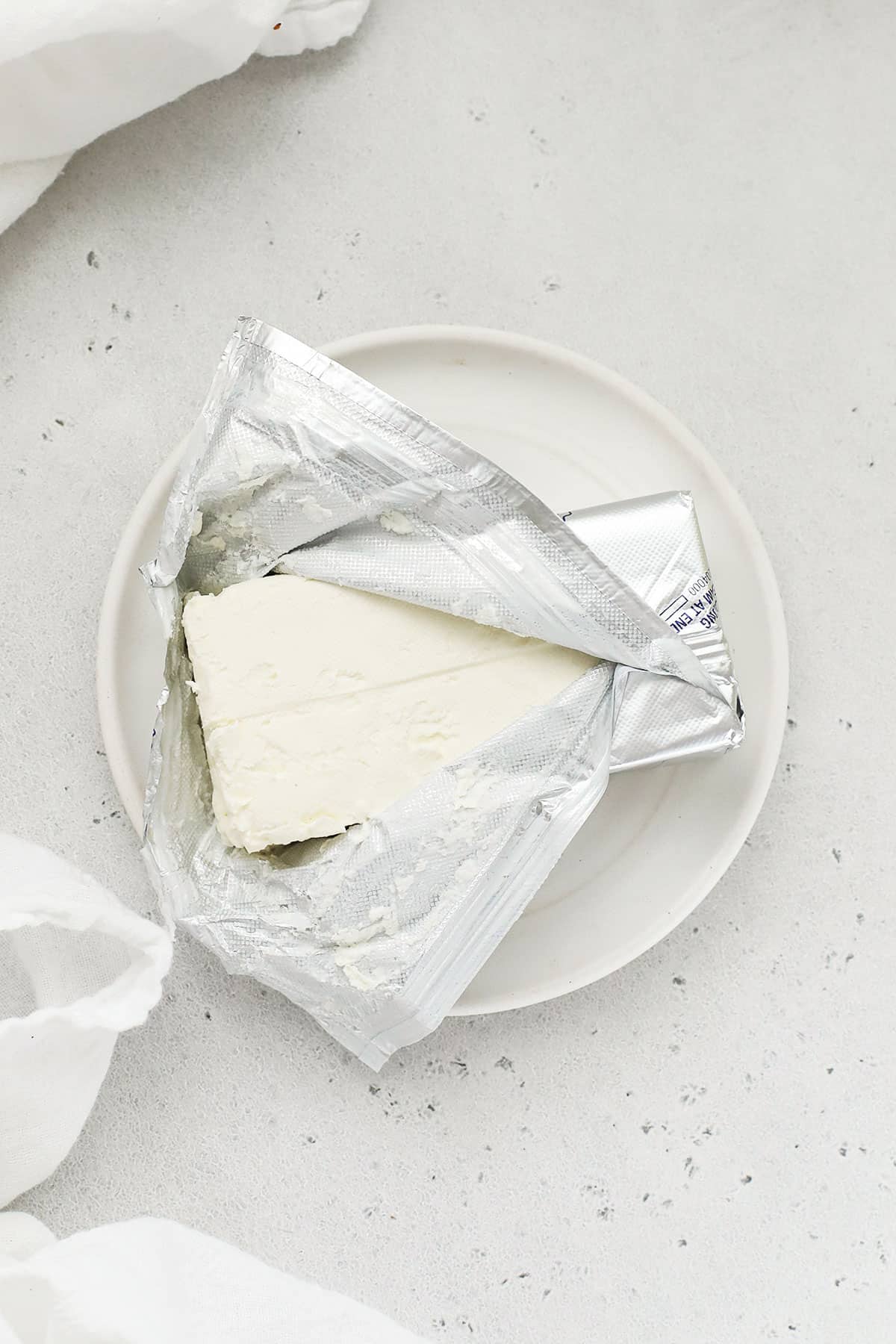
Back today with another baking tip, and this one’s all about softening cream cheese!
Softened cream cheese is a key ingredient for some of my favorite recipes–homemade cheesecake, cream cheese frosting, fruit dip, truffles, and so much more. It’s such a versatile ingredient!
The creamy texture and tangy flavor is a classic for savory dishes and sweet dishes alike! And, just like with using softened butter or room temperature eggs, the temperature of cream cheese has a big impact on the quality of your bake!
So what’s the best way to soften cream cheese? We’ll walk you through everything you need to know, plus 3 different methods to try next time you’re cooking or baking with cream cheese! (Spoiler: #3 is my favorite way!)
Let’s jump in!

Do I Really Have To Soften Cream Cheese?
YES, if your recipe calls for it. If a recipe calls for softened cream cheese or room temperature cream cheese, it’s important for the structure and quality of your recipe. In this case, you’re looking for a softer, more pliable texture. It can give you smoother cheesecake batter, lump-free frosting, or perfectly blended truffles. It makes a big difference when you’re trying to get the perfect consistency!
Ideally, room temperature cream cheese should be between 68-70 degrees F. Properly soft cream cheese should be soft enough to easily press, scoop, or blend.
So why does temperature matter? Well, using cold cream cheese can cause lumpy batter or uneven texture when blending, while using melted cream cheese can ruin the texture of frosting or cookies. So how do we get it just right? Let’s take a look at 3 great methods for softening cream cheese and 1 method you should avoid.
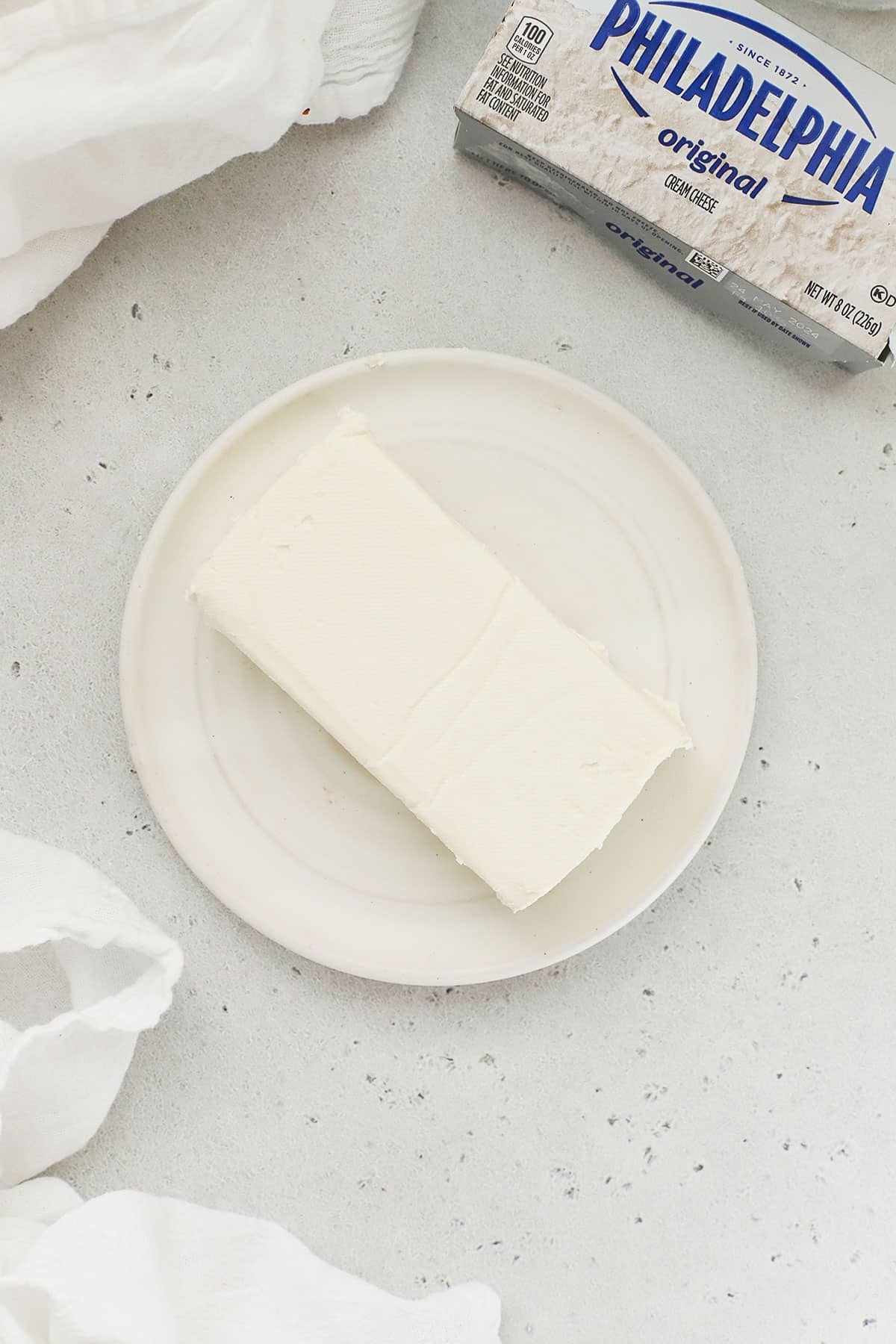
Option 1: Countertop Method
The most common way to soften cream cheese is to simply let it sit at room temperature. This method usually takes 60-90 minutes, so it’s the most time-consuming of the 3 we’ll discuss today. Here’s what to do:
- Remove Packaging. If your cream cheese is foil-wrapped and packed in a cardboard box, remove and recycle the box, leaving the packaged wrapped in foil. Unwrap the package of cream cheese and let the whole block of cream cheese soften on the open wrapper, or transfer to a plate to come to room temperature.
- Let It Rest for 60-90 minutes, or until it’s easily pliable and doesn’t feel cold to the touch. (A spoon or your finger should easily make an indent)
Pros & Cons. This is the easiest way to soften cream cheese since you just need to unwrap it and leave it alone. It is, however, the most time consuming, so you’ll need to plan ahead if you use this method.
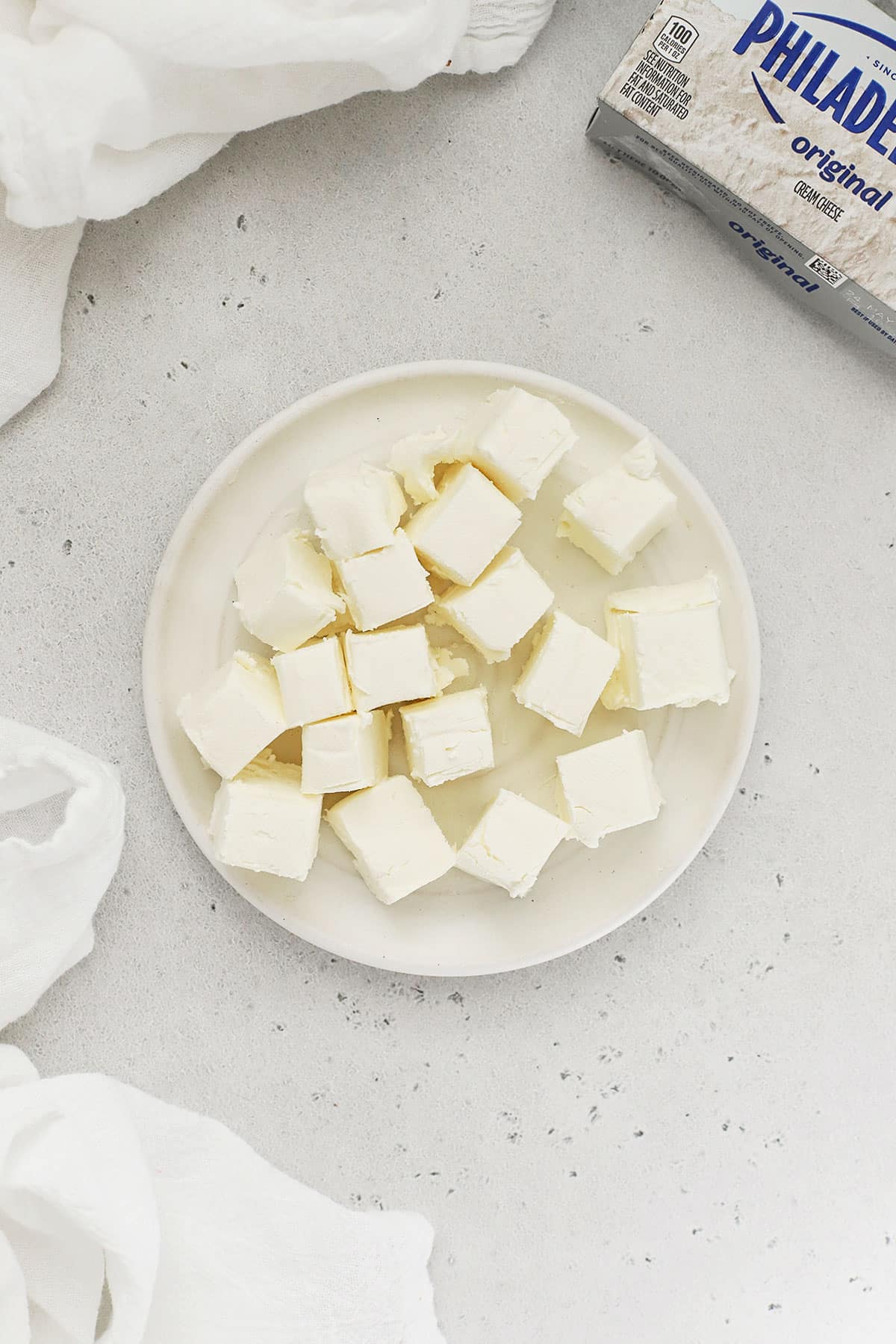
Option 2: Cube Method
To speed up the countertop method, you can cut the cream cheese into smaller pieces before softening. Each small cube will soften faster than the large cream cheese block, so it can cut down on softening time! Expect this to take 20-30 minutes at room temperature.
- Remove Packaging. Start by unwrapping the cream cheese, recycling the box and unwrapping the foil.
- Cut Into Small Cubes. To speed up the softening process, use a sharp knife to cut the cream cheese into small 1/2-inch cubes. You can leave them on the open wrapper or transfer them to a plate to come to room temperature on the kitchen counter.
- Let It Rest for 20-30 minutes, or until it’s easily pliable and doesn’t feel cold to the touch. (A spoon or your finger should easily make an indent)
Why It Works: cutting the cream cheese into small pieces increases the surface area exposed to the ambient temperature in the room. The air can move around the cubes more freely, which helps it soften faster.
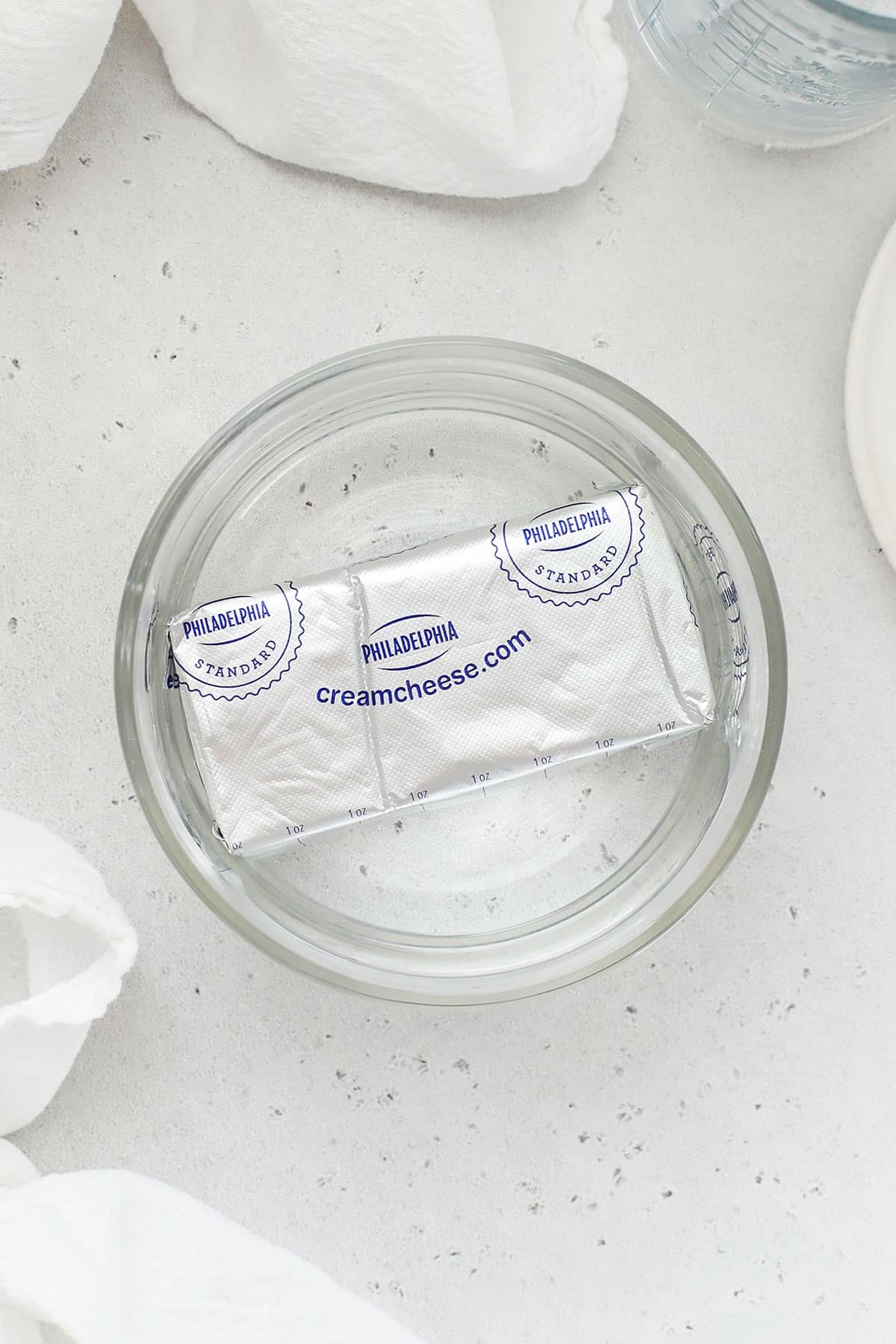
Option 3: Water Bath Method (Fastest Method!)
This is the fastest way to soften cream cheese that we’ve tried, and it’s our preferred method. Just like when you bring eggs to room temperature quickly, you can use the warm water bath method (a bowl of warm water) to soften cream cheese fast. Here’s how to do it:
- Remove Cardboard Packaging. If your cream cheese is foil-wrapped and packed in a cardboard box, remove and recycle the box, leaving the packaged wrapped in foil.
- Add Wrapped Cream Cheese To a bowl deep enough to submerge the blocks in water. (If your cream cheese is sold in bulk or is already unwrapped, you can place it into a ziploc bag and press out any excess air before adding it to the bowl.)
- Cover With Warm Water. Then, fill the bowl with lukewarm (not hot!) water. Be sure the water isn’t hot, or it can start to melt the cream cheese. It should just feel just warmer than your fingertips.
- Let It Sit 15-20 Minutes. Rotate the packages every few minutes if you can so they soften evenly.
Nervous about leaking? You can place the foil-wrapped cream cheese in a large ziploc bag and press out all the excess air before sealing for an extra protective barrier!
Can I Use A Microwave?
I love my microwave for many things, but I do NOT recommend using a microwave to soften cream cheese. The microwave method is decidedly the riskiest method, since microwaves notoriously do not distribute heat evenly and can easily melt or scorch cream cheese. Melted cream cheese can separate because of its high fat content, which can ruin the texture of recipes like frosting and cheesecake. It’s the least reliable method, and I don’t recommend it.
If you plan to use your microwave, I recommend using a lower power setting (start with 50% power, if you can!) and microwaving unwrapped cream cheese on a microwave-safe plate or microwave-safe dish for very short increments of time (just 10-second intervals at a time). You’ll need to pay careful attention to it, since it’s likely to melt or separate using this method.

FAQ + Tips And Tricks For Softening Cream Cheese
What’s The Best Kind of Cream Cheese? For most baking and cooking projects, you’ll get the best results from a full-fat block of cream cheese (brick-style cream cheese/block cream cheese), rather than whipped cream cheese or cream cheese spreads. That said, always follow the recommendation in your recipe, since the recipe creator has taken that into account.
How Long Does It Take Cream Cheese To Soften? If you’re simply setting cream cheese out on the counter, it can take 60-90 minutes to properly soften, depending on the temperature in your house. With our water method, the cream cheese will be softened in just 15-20 minutes.
How Long Can Cream Cheese Sit Out? To follow general food safety guidelines, cream cheese shouldn’t be out at room temperature longer than 2 hours to avoid bacterial growth.
🌟 Did you try one of our methods? Leave a star rating below and tell me which one you tried!
Print
How To Soften Cream Cheese Quickly
- Total Time: 20 minutes
- Diet: Gluten Free
Description
These 3 methods are perfect for softening cream cheese for a cheesecake recipe, frosting, dip, appetizer, and more!
Ingredients
- Cream Cheese
- For Water Method: A large bowl or container (+ a bag, if needed)
- For Cubing Method: A sharp knife
Instructions
For Countertop Method (60-90 Minutes)
- Remove Packaging. If your cream cheese is foil-wrapped and packed in a cardboard box, remove and recycle the box, leaving the packaged wrapped in foil. Unwrap the cream cheese and let the block of cream cheese soften on the open wrapper, or transfer to a plate to come to room temperature.
- Let It Rest for 60-90 minutes, or until it’s easily pliable and doesn’t feel cold to the touch. (A spoon or your finger should easily make an indent)
For Cube Method (20-3o Minutes)
- Remove Packaging. Start by unwrapping the cream cheese, recycling the box and unwrapping the foil.
- Cut Into Small Cubes. To speed up the softening process, use a sharp knife to cut the cream cheese into small 1/2-inch cubes. You can leave them on the open wrapper or transfer them to a plate to come to room temperature.
- Let It Rest for 20-30 minutes, or until it’s easily pliable and doesn’t feel cold to the touch. (A spoon or your finger should easily make an indent)
For Water Method (15-20 Minutes)
- Remove Cardboard Packaging. If your cream cheese is foil-wrapped and packed in a cardboard box, remove and recycle the box, leaving the packaged wrapped in foil.
- Add Wrapped Cream Cheese To A Bowl deep enough to submerge the blocks in water. If your cream cheese is sold in bulk or is already unwrapped, you can place it into a ziploc bag and press out any excess air before adding it to the bowl.
- Cover With Warm Water. Then, fill the bowl with warm (not hot!) water. Be sure the water isn’t hot, or it can start to melt the cream cheese. It should just feel like warm bath water.
- Let It Sit 15-20 Minutes. Rotate the packages every few minutes if you can so they soften evenly.
Notes
- For food safety, cream cheese shouldn’t be out at room temperature longer than 2 hours.
- Prep Time: 20 minutes
- Category: Tip
- Method: No-Cook
- Cuisine: American


